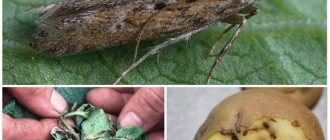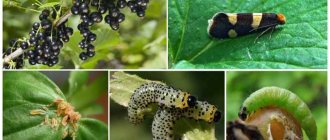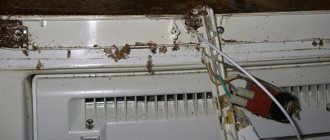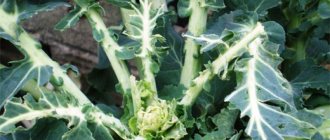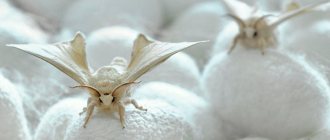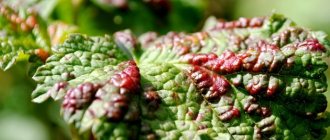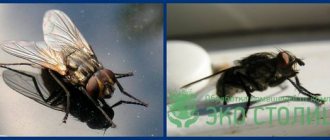- Description of the scoop butterfly
- Types of cutworms and how to distinguish them Winter cutworm
- exclamation scoop
- Cutworm
- Cabbage scoop
Cutworms are small brown butterflies that closely resemble house moths in appearance. However, despite their small size, they are the worst pests of agricultural crops. The moth moth is distributed throughout Eurasia and North Africa.
Armyworm caterpillars damage all crops from the Cabbage and Solanaceae families, as well as sunflowers, green crops, cucumbers, and ornamental flowers. Details of the description of this butterfly and measures to combat it are included in this material.
Description of the scoop butterfly
These pests belong to the insect family. The span of their brownish or brown wings can reach 5 cm, and when folded they fit tightly to the body. The life expectancy of cutworms does not reach 1 month.
Females lay 200 or more eggs on the back of the leaves, from which voracious caterpillars hatch after 1.5 weeks. Immediately from the day they are born, the caterpillars begin to intensively feed on the delicate tissues of young leaves.
The massive flight of butterflies in the Moscow region occurs in the middle of the first month of summer. In the southern regions of the Russian Federation this happens a month earlier. At the end of August, the moth moth disappears somewhere.
Nematodes
Potato nematode is a round worm, 1-2 mm long, infecting stolons and tubers of the crop. Females lay eggs inside themselves and die at the end of summer, forming a cyst - a storage facility with a dense shell from which larvae emerge.
Cysts of some types of parasite live in the soil for up to 10 years, so the area gradually becomes infected with pests.
Types of nematodes parasitizing potatoes:
- golden;
- gall;
- pale;
- leafy;
- stem
Potatoes affected by worms slow down their growth, the tops turn yellow and dry out. Such bushes usually have no or a small number of flowers, and tubers do not form.
Types of armyworms and how to distinguish them
In total, more than 3 thousand varieties of cutworms live in the world, but the maximum damage to agricultural crops is caused by gnawing cutworms. This group includes the following scoops:
- winter;
- exclamation;
- potato
Butterflies begin to become active at dusk and continue to remain this way throughout the night. They also lay eggs at night. Cutworm larvae damage the following crops:
- carrot;
- cabbage;
- sunflower;
- beets;
- peas.
In tubers and root crops located deep in the soil, the larvae make passages without affecting their shell.
Fall armyworm
It is represented by a medium-sized butterfly of gray-yellow color, which lives in the European part of the Russian Federation. The mass flight of butterflies occurs from May 10 until the end of July. The fall armyworm differs from other similar insects in its fertility.
During the season, female winter cutworms lay 1000 eggs, from which caterpillars hatch within a week. At the first stage, the larvae live on the leaves of the lower tier, and then they move to the fertile soil layer.
An older caterpillar has a yellow-green color with a sheen, its body is quite thick, and its length reaches 5 cm. One such caterpillar can harm 10 plants in 1 night. In the southern regions, this variety of cutworm produces 2 generations.
Those caterpillars that were born in the fall eat grain and young shoots of winter crops. This is where the name of this insect comes from - the winter cutworm.
exclamation scoop
The wingspan of this gray butterfly reaches 35 mm, and its dark gray larvae reach a length of 3 cm. The development process of such butterflies is in many ways identical to the winter armyworm, so we will not dwell on it. Plantings of cabbage crops and carrots suffer most from exclamation scoops.
Cutworm
The pest is represented by medium-sized brown-brown butterflies. Their caterpillars can also be colored brown or light green. The massive flight of butterflies is observed at the end of May; they lay an average of 60 eggs on the reverse side of the leaf. After 10 days, caterpillars are born from the eggs, damaging the following crops:
- turnip;
- radish;
- pepper;
- legumes;
- cabbage;
- tomatoes.
Cabbage scoop
This moth is one of the most dangerous pests of vegetable crops. Cabbage suffers most from it. Butterflies are large in size, colored in dark gray tones, and the edges of their wings are jagged. Mass flight of such scoops is observed at the zenith of May.
Females give 2 generations during 1 season. They place eggs on cabbage leaves, less often on lettuce, pea or beet leaves. From the moment the eggs are laid until the larvae appear, an average of 10 days pass.
The emerging caterpillars gnaw on the leaves, leaving holes in them. Sometimes they bite inside the head of cabbage, contaminating it with waste products.
Step-by-step instructions for fighting
With a cutworm butterfly in the garden
The armyworm and the fight against it have a number of features. Read below on how to deal with cutworms in your garden.
Prediction using pheromone traps. Traps show the exact time of the beginning of butterfly flight and the appearance of caterpillars. Initially, the summer passed during the flowering period of dandelions. But now all deadlines are shifted and extended in time
Therefore, forecasting is very important for timely action. To avoid poisoning plants with chemicals, you should first try to remove the cutworm using folk remedies.
Attracting the cutworm's natural enemies - Trichogramma and Bracona. Hang bait traps throughout the garden. If the effectiveness is insufficient, biological products against cutworms are used. If they do not help to completely get rid of the butterflies, use the “heavy artillery”. Control measures for the fall armyworm should include chemical insecticides. When finishing the gardening season, it is worth digging up all the soil deeply, since cutworms overwinter in the soil. After digging, most of the pests die.
Now you know how to get rid of cutworms in your garden. About scoop caterpillars, how to fight further.
- At the beginning of the season, dig the soil as deep as possible to reduce the number of overwintering pests.
- When planting, use alternation of different plant crops.
- Be sure to eliminate weeds that serve as the initial food supply for the larvae.
- When the first single specimens appear, they begin to be collected manually.
- If the number of caterpillars begins to increase, a means is selected to destroy them.
It is recommended to use gentle drugs from the group of folk or biological ones.
If they are ineffective, biological products are replaced with chemical insecticides. After harvesting, deep digging of the site is used again.
The cutting armyworm methods for dealing with it are below.
With a gnawing scoop
- The main measure to reduce the number is digging up the soil to a depth of at least 25 cm. This is carried out twice a season - before planting and after harvesting. This procedure will get rid of most existing pests in the caterpillar and pupa stages;
- After planting the plants, they regularly loosen the soil between the rows and beds with a thorough inspection. All discovered caterpillars are immediately removed and destroyed;
- eliminate weeds not only in the garden, but also around the entire site;
- lure the gnawing moth butterfly into traps from a fermenting drink - kvass, molasses, beer, compote;
- To destroy the larvae that live in the ground, it is necessary to use soil insecticides.
Some experienced gardeners use a tank mixture of the drug (1/2 of the required dose) with urea (100 g per bucket of water).
Control measures for cotton bollworm are slightly different, more on that below.
The cotton bollworm is a quarantine pest against which special measures are taken. How to deal with it further.
Quarantine procedures include:
unrelenting control over purchased seedlings, seedlings and bushes
Particular attention should be paid to cotton, chrysanthemums, tomatoes, corn, roses and eggplants. But remember that the cotton bollworm is an almost omnivorous pest; if a pest is detected, the entire batch of purchased sprouts is fumigated, as well as the container; widespread and active use of pheromone traps
Photos of the scoop and the fight against it, see below.
How to deal with the scoop? The subsequent struggle is:
- In compliance with all rules of agricultural technology in closed greenhouses and in open areas.
- Constant monitoring and identification of pests at all stages of development.
- Thorough and timely removal of weeds and their subsequent burning.
- Preventive treatment of suspicious plants with chemical insecticides.
Read on for potato bollworm control measures.
How to deal with cutworms
An integrated approach should be used to combat this insidious pest. For example, you cannot rely only on commercial chemicals or folk remedies, since this may not be enough to free crops from cutworms.
Agrotechnical measures should also be practiced to curb the development of the pest. In some cases, a biological method may be effective.
All methods of struggle are divided into the following types:
- agrotechnical;
- mechanical;
- biological;
- folk remedies.
Important! It is always useful in the fight against cutworms to combine 2 or more methods of negative impact on them.
General recommendations
You need to start fighting for the future harvest as soon as the first potato shoots appear. Plants are regularly inspected for the presence of characteristic symptoms, and appropriate measures are taken at the first suspicious signs.
From the moment the first shoots appear, potato beds should be carefully inspected regularly for suspicious symptoms.
A mandatory procedure is weeding the beds. Many weeds are a “home” for most insects. Mulching between rows with freshly cut grass, straw, peat chips, and humus will help save time on weeding. You should not use sawdust for this purpose - they strongly acidify the soil, which potatoes really don’t like.
In autumn, the bed must be cleared of all plant debris and dug deep. This will help destroy insect eggs and larvae.
The only pest from which breeders managed to protect potatoes is the golden nematode. The varieties Zhukovsky early, Zavorovsky, Rozhdestvensky, Pushkinets, Latona, Sante, Symphony, and Fresco are resistant to it.
An almost universal folk remedy is sifted wood ash. It is used to powder tubers (and especially their parts) when planting, as well as adult plants. Ideally, this should be done every time after rain. Colloidal sulfur has a similar effect, but it is used less frequently, about once a month.
Sifted wood ash is a proven repellent for many pests, as well as a source of potassium and phosphorus.
When using insecticides, it should be remembered that the use of preparations of biological origin is stopped 5–7 days before the expected harvest. Chemicals - in 20–25 days. The latter are extremely undesirable to use during flowering. Solutions are prepared in strict accordance with the manufacturer's instructions.
When choosing a pest control agent in each specific case, a reasonable balance should be maintained. It is unlikely that folk “old-fashioned” methods will help with a massive pest invasion. But you shouldn’t roll out the “heavy artillery” after finding several insects.
Agrotechnical method
Having fed, the caterpillars move into the soil in the fall, where they soon turn into pupae. In the pupal state they go into winter. With the onset of spring, the pupae undergo transformations and become butterflies.
The number of pupae, and therefore butterflies, can be reduced by deep plowing to 24 cm with a rotation of the layer. The pupae will be turned to the surface, where they will die from frost.
The same goal is pursued by spring deep cultivation at the earliest possible date. When loosening the rows, during the summer growing season, the larvae appear on the surface and are readily eaten by birds.
In early spring, the cutworm butterfly eats pollen from quinoa, nettle and white goosefoot. If you mow the weeds in a timely manner, this will deprive the butterfly of the opportunity to feed, and it will leave your area.
Chafer
Pests of potato tubers are beetle larvae, large white caterpillars with brown or reddish dots on the body. Before the adult stage, the larvae go through several stages, living in the soil for four to five years.
In the first season, cockchafer caterpillars do not cause harm to tubers and roots, since they do not have a chewing apparatus. Starting from the second year and until they transform into beetles, the larvae feed on the pulp of the tubers, gnawing holes in them. Adult caterpillars travel underground distances that are significant for their size (up to 100 meters), damaging a large number of crop bushes.
Chemicals against armyworm
In case of massive damage to crops, the most effective way to combat armyworms is the use of insecticides. Now the most popular drugs against this pest are the following:
- Karate;
- Samurai;
- Decis;
- Stefesin;
- Proteus;
- Bazudin;
- Fufanon;
- Kinmiks.
The preparation of solutions based on these purchased products must be done strictly according to the instructions and in protective equipment. Harvesting begins 20 days or more from the date of the last treatment.
Biological method
There is nothing better than using their natural enemies to combat cutworms. This is what the biomethod is aimed at. To solve this problem, you can use Trichogramma, which eats armyworm eggs. This predatory insect is released when the armyworm lays eggs, at the rate of 350 insects per hundred square meters.
In addition, domestic and imported biological products are available for sale that effectively suppress the development of armyworms and are absolutely harmless to humans. The active ingredients in them are usually strains of fungi or bacteria that infect the pest. The following brands have gained the most popularity among biological products:
- Fitoverm;
- Entobacterin;
- Bitoxibacillin;
- Aktofit;
- Agravertine;
- Nature Guard.
Important! Spraying should be carried out strictly according to the instructions, in the evening, in weather that does not predict precipitation. The air temperature should be +20 degrees and above.
Prevention
Pest control takes a lot of time; it is much easier to prevent the appearance of dangerous insects in the garden. The procedures and techniques are simple, but effective:
- soaking potato tubers before planting;
- use of high-quality healthy seed material;
- compliance with crop agricultural technology: hilling, loosening, weeding, watering, fertilizing;
- treating potato plantings with various infusions and decoctions to prevent the appearance of insects;
- rotation of crops on the site;
- mandatory digging of the soil (twice a year, in the fall - preferably before frost);
- disinfection of garden equipment;
- selection and cultivation of pest-resistant varieties;
- thorough preparation of tubers for storage;
- studying information on crop pests, since modern gardening requires a competent approach.
Not everyone can grow a good potato crop. Not only proper care is important, but also timely prevention of diseases and the prevention of pests. If dangerous insects have already taken a fancy to your plantings, then, without hesitation, they begin to destroy their enemies.
Natalia Severova
Tags: fight, potatoes, soviet
About the author: admin4ik
« Previous entry
